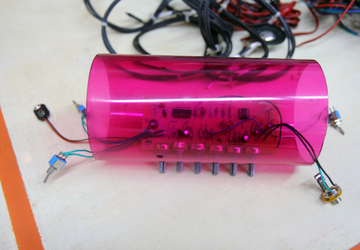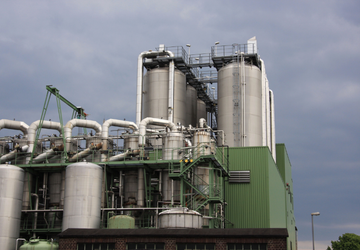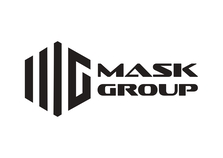
PTFE
PTFE’s exceptional qualities such as high melting point (342 °C) and unique morphological features allow components made of this resin to work continuously at service temperatures as high as 260 °C. Nevertheless, the physical characteristics of the components start to deteriorate over this temperature threshold, resulting in heat-aging and material degradation. The outstanding properties of PTFE are most evident in cryogenic applications. PTFE stands out for its exceptional resistance to temperature changes without experiencing material deterioration, heat aging, or changes to its physical characteristics.
PTFE’s major characteristics are;
- Chemical Resistance
- Temperature Resistance
- Low Coefficient of Friction
- Electrical Insulation
- UV Resistance
- Low Surface Energy
- Mechanical Strength
- Weather Resistance
- Hydrophobicity
- Non-Toxic and Safe
- Glass Filled PTFE
Glass fibre is a commonly used filler element with a positive impact on creep performance of PTFE, which is reduced at low and high temperatures. It also adds wear resistance and offers good compression strength. This additive is chemically inert except in the presence of hydrofluoric acid and strong bases. It has little effect on electrical properties. We, at Mask Seals, uses Glass Filled PTFE as raw material for production of various components. The strengths of Glass Filled PTFE are;
- Enhanced Rigidity
- Wear-resistant
- Lower deflection under load conditions
- Lower thermal expansion
- Non-conductive
- Carbon Filled PTFE
Carbon helps to improve hardness, reduce creep, and increase PTFE’s heat conductivity. Carbon-filled materials exhibit a significant improvement in wear resistance, particularly when coupled with graphite. With the possible exception of oxidizing situations where glass performs better, carbon is among the most chemically inert fillers. Furthermore, PTFE gains some electrical conductivity with the addition of carbon. Pneumatic sealing frequently uses PTFE that has been filled with carbon, but compounds that combine graphite and carbon stand out as the ideal materials for non-lubricated applications. We, at Mask Seals, uses Carbon Filled PTFE as raw material for production of various components. The strengths of Carbon Filled PTFE are;
- Lesser Creep
- Enhanced Rigidity
- Increased Thermal Conductivity
- Improved Wear Resistance
- Best tolerances
- Graphite Filled PTFE
Graphite Filled PTFE is endowed with remarkable qualities by virtue of graphite, a crystalline form of high-purity carbon. Because graphite naturally has a low coefficient of friction, this substance has one of the lowest coefficients of friction. It performs exceptionally well in high-speed contact applications by supporting heavy loads and demonstrates exceptional wear resistance, particularly when engaging with softer mating surfaces. Graphite’s chemical inertness allows it to be used in corrosive conditions, which increases its adaptability to a range of applications. We, at Mask Seals, uses Graphite Filled PTFE as raw material for production of various components. The strengths of Graphite Filled PTFE are;
- Best-fit for dry environments
- Enhanced thermal and electrical conductivity
- Reduced deformation
- Bronze Filled PTFE
As widely used metallic filler, bronze gives PTFE compounds useful properties. When there is a significant amount of bronze (40–60% by weight), the PTFE’s deformation under load is significantly decreased, and its electrical and thermal conductivity are also increased. These two properties come in handy when a component has to withstand loads at very high temperatures. Excellent resistance to extrusion is displayed by the Bronze Filled PTFE that is produced. It’s important to remember that bronze, which is an alloy of copper and tin, is vulnerable to some chemical reactions. Bronze oxidation can cause discolouration in the final product, but it doesn’t affect the product’s overall quality. PTFE filled with bronze is widely used, especially for piston and rod seal applications in hydraulics. We, at Mask Seals, uses Bronze Filled PTFE as raw material for production of various components. The strengths of Bronze Filled PTFE are;
- Reduced deformation
- Enhanced thermal and electrical conductivity
- Hard-wearing material
Characteristics of Bronze Filled PTFE
| Characteristics | Value |
| Specific Gravity | |
| Tensile Strength | |
| Elongation | |
| Shore D Hardness |
1.5 Molybdenum Filled PTFE
- Molybdenum disulphide is interesting filler. It increases the hardness of the surface while decreasing friction. Electric properties of the compound virtually unaffected. It is normally used in small proportions combined with other filler such as glass.
1.6. Modified PTFE (TFM)
- Modified PTFE pushes the limits of regular PTFE, offering exciting new possibilities for a wide variety of applications. Modified PTFE, also known as TFM (trade name of 3M).
In other wordsTFM has added chemicals that make it stronger and more versatile than regular PTFE. And because of its strength and versatility, modified PTFE is used in a wide variety of industries.
Modified PTFE also has lower porosity and permeability which helps reduce the amount of liquid absorption, making it perfect for products such as seals for wet environments. On top of that, modified PTFE has smoother surfaces, nonstick and dielectric properties, and a reduced cold flow. It has good metering properties, good electrical and mechanical properties. And with excellent fuel and additive resistance, MPTFE can replace conventional materials such as PTFE and make it easier to use more aggressive lubricants and seal designs.
1.7. Pigmented PTFE
- Inorganic pigments confer color to PTFE compounds. They are preferred among other types of pigments because they can withstand the PTFE sintering temperatures.
- Inorganic pigments are usually used as color codes for both ease of identification of parts or customization. For specific color requirements, please contact us.
1.8. Poly Ether Ether Ketone (PEEK):-
Polyetheretherketone is often abbreviated as PEEK. It is a high-performance engineering thermoplastic that belongs to the family of polyketones. It is known for its exceptional mechanical, thermal, and chemical properties.
These features make PEEK suitable for a wide range of applications. The uses range from aerospace, automotive, medical, and electronics industries.
PEEK is available in filler grades such as carbon, Glass, PTFE in different percentages according to different applications.
1.9. PCTFE
(polychlorotrifluoroethylene homopolymer). Used with increasing frequency, particularly in cryogenics, it is matched by our commitment to produce of an increasingly broad range of semi-finished and finished products. In fact, the particular machining cycles to produce plates, rods, rings and sleeves require the use of specially designed and manufactured equipment and machinery.
Related Industries:








